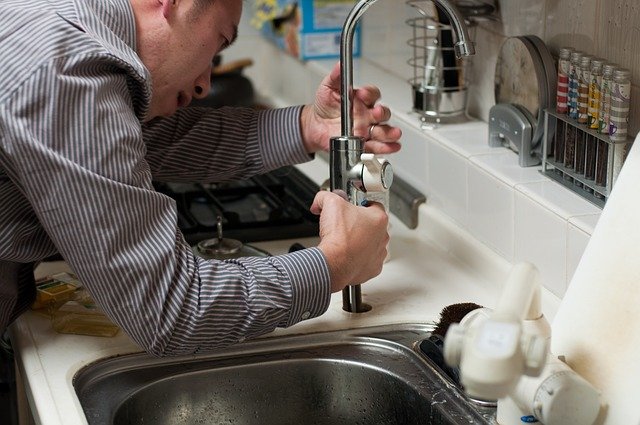Table of Contents
How to clean sink with baking soda and dish soap
You may believe that your kitchen sink is relatively clean given the amount of soap and water that flows through it every day. That, however, is not the case. Daily rinsing and splashing with dish soap accomplishes little in terms of cleaning your kitchen sink.
The kitchen sink may be one of the dirtiest areas in your house, thanks to food particles, stagnant water, and whatever germs wash into the sink off your hands! So, what’s the best way to clean a kitchen sink?
- Give your sink a good scrubbing
Before cleaning your kitchen sink, make sure you complete any dishes and give it a thorough rinse. Before you begin cleaning your kitchen sink, remove all food, drinks, and debris. Clear the drains once you’ve rinsed.
Even if you don’t have time to clean your sink completely, rinsing it clear of food and dirt is a recommended everyday exercise. Acid and salt from food can corrode the finish of your stainless steel sink.
- Scatter Baking Soda across the Sink
Sprinkle baking soda in the sink after you’ve cleaned it clean of visible food and debris. Don’t be stingy with your coverage; strive to cover the entire sink.
Baking soda canisters with sprinkles are available, such as this one:
Alternatively, you may drill holes in the top of a mason jar. Consider adding a few drops of your favorite essential oils to your baking soda if you’re using a mason jar. It will fill your kitchen with a wonderful aroma. Lemon is one of our favorites!
- Using a clean sponge or cloth, squirt dish soap
You’re ready to start scrubbing once you’ve covered your sink with baking soda. To make cleaning easier, apply a small amount of dish soap to your sponge or towel.
- Begin to Scrub Baking soda is abrasive, but not to the point of scratching stainless steel or other sinks. Scrub your sink starting at the top and working your way down to the drain. The easiest technique to clean your kitchen sink is to scrub it thoroughly in a circular motion.
- Cleanse
You’ll want to sanitize your kitchen sink after you’ve finished scrubbing it clean. Rinse out your freshly scrubbed sink to ensure that everything you’ve cleaned is rinsed away and down the drain.
After that, soak some paper towels in white vinegar and line your sink with them. Allow the towels and vinegar to sit for about 20 minutes after covering the entire sink. Vinegar acts as a natural disinfectant. Also, it can aid in the removal of hard water stains.
- Ensure that the faucets are in good working order
Don’t forget to clean your faucet and handle now that your sink basin is clean and sterilized. A mild soapy solution can be used to clean faucets and sink handles. A sponge and dish soap or a surface cleanser should suffice.
After cleaning your faucets, wipe them down with a vinegar-soaked towel to sterilize these often touched surfaces.
- Drain or deodorize the garbage disposal
Your freshly cleaned kitchen sink will clash with a stinking garbage disposal or drain. Pour around 12 cup baking soda down your disposal, followed by a cup of vinegar. For a few minutes, the mixture will fizz. Rinse out the baking soda and vinegar with hot water. Your drain or disposal should be sanitized and deodorized as a result of this.
How to Use Baking Soda to Clean Your Sink
Because sinks are frequently used, food and grime can accumulate. This can cause them to drain slowly or even appear discolored. To clean your sink using baking soda, rub it into the surface and then wash it away with white vinegar. Try flushing your sink with boiling water, baking soda, and white vinegar if your drain is clogged.
- Rinse your sink after removing all of your dishes. Start with a clean slate when cleaning your sink. Remove any dirty dishes from the sink and give it a thorough rinse with cool water. Make sure the drain catch doesn’t have any food chunks stuck in it.
- If there is a lot of food residue in your sink, pour some dish soap in it before rinsing it off.
- Cover your entire sink with a layer of baking soda. Apply a generous amount of baking soda to the entire sink. Make sure to clean both the sides and the bottom of the sink. If you sprinkle too much in one spot, gently brush it around the sink with your fingers.
- Shake the baking soda box immediately over the sink, or scoop a small amount and sprinkle it around with a spoon.
- Scrub the baking soda in a circular motion with a sponge. Buff the baking soda into your sink with a moist sponge. Work with the grain of your sink’s grain. Baking soda is a mild abrasive, which means it will clean without scratching. If you don’t scrub every inch of your sink, you’ll end up with streaks.
- If you’re afraid about scratching your sink with an abrasive material, you can use a cloth instead of a sponge.
- Pour vinegar all over the sink. When the vinegar reacts with the baking soda, it forms froth. Baking soda dissolves in vinegar, along with whatever grease or filth that has accumulated, making it easier to flush down the drain. Pour enough vinegar into your sink to dissolve all of the baking soda.
- Neither baking soda nor vinegar will clog your drain.
- Fill the sink with warm water and scrub it clean. Pour all of the vinegar and baking soda down the drain using your sink faucet. The baking soda will dissolve even faster if you use warm water. Use a hose faucet extender to rinse out the entire sink if you have one.

